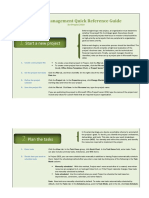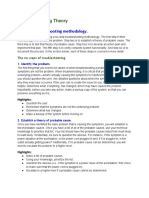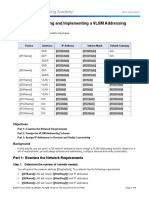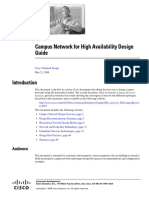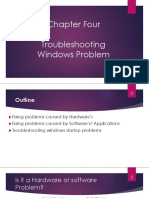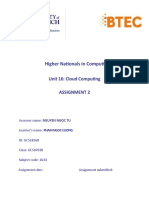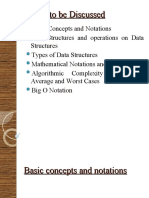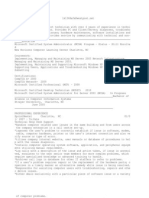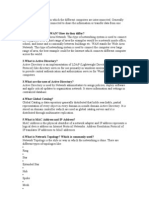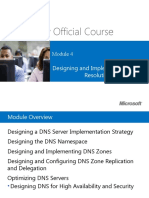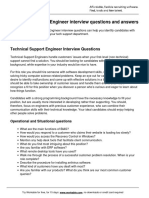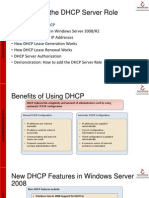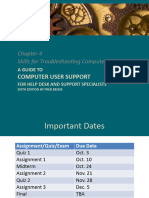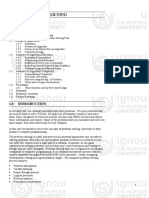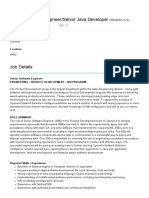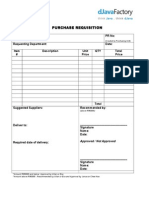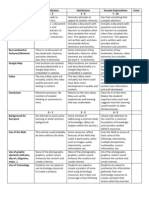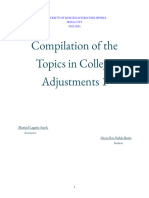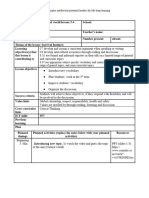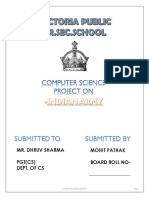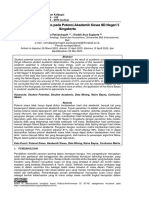Help Desk
Troubleshooting Computer
Problems
�Troubleshooting Computer
Problems
Solving computer problems is one of the most
critical and frequent task user support specialists
perform. These problems, presented by users can
cover a wide range, including requests for
information, questions about how to perform a
task, complaints about a product or feature, or a
problem that involves hardware or software.
Certificate III Software
Applications
Troubleshooting Computer
Problems
�What is
Troubleshooting?
Troubleshooting is the process of defining,
diagnosing and solving computer problems.
One form of solving computer problems may
be a series of sequential steps.
Certificate III Software
Applications
Troubleshooting Computer
Problems
�Sequential Problem Solving
Process
Collect information
to clarify problem
Consider
alternative
explanations
Formulate
hypothesis
Test hypothesis
Analyse results
Certificate III Software
Applications
Troubleshooting Computer
Problems
�Iterative Problem Solving
Process
Troubleshooting is often an iterative process, a
process
that
involves
several
paths
or
approaches to problem solving. This means that
the troubleshooter follows one sequence of
steps for a while, then loops back and performs
similar steps but down a different path.
Certificate III Software
Applications
Troubleshooting Computer
Problems
�Iterative Problem Solving
Process
The process can involve many false starts and
temporary stops, as the troubleshooter pursues
an approach.
Collect information
to clarify problem
Analyse results
Consider
alternative
explanations
Test hypothesis
Formulate
hypothesis
Certificate III Software
Applications
Troubleshooting Computer
Problems
�Iterative Problem Solving
Process
An iterative process may seem repetitious,
and in a way it is.
Troubleshooting is not always a neat, linear,
and orderly process.
It is both an organised and creative process
that requires flexibility and thinking skills
and patience that will eventually lead to a
satisfactory solution.
7
Certificate III Software
Applications
Troubleshooting Computer
Problems
�Iterative Problem Solving
Process
The tools user support specialists employ in
troubleshooting can be physical tools
such as a diagnostic program or a
database of information, or they can be
thinking skills, such as:
problem solving
critical thinking
decision making
Certificate III Software
Applications
Troubleshooting Computer
Problems
�Iterative Problem Solving
Process
The equipment
doesnt work
State X :
Current
status
Pa
th
Ou
pa t of
pe
r?
Pa
th
Pa
pe
rj
am
3
Ba
d
Pa
th
ca
b
le?
The equipment
works
Certificate III Software
Applications
Troubleshooting Computer
Problems
State Y : Goal
State
�Problem Solving Skills
Problem solvers use a variety of thinking
skills. For example, a problem solver may
analyse a problem on the basis of:
Analogies: Ways in which the current
problem is similar to other problems that
have been solved;
"This problem with fonts in Excel is very
similar to a problem with fonts in Word
10
Certificate III Software
Applications
Troubleshooting Computer
Problems
�Problem Solving Skills
Problem solvers use a variety of thinking
skills. For example, a problem solver may
analyse a problem on the basis of:
Contradictions: Situations in which two
facts cannot be true at the same time;
If this network card doesn't operate
in one computer, but works in another
one, the problem is unlikely to be a
defective network card
11
Certificate III Software
Applications
Troubleshooting Computer
Problems
�Critical Thinking Skills
Critical thinking describes the cognitive skills a
problem solver uses to analyse a situation,
search for the underlying logic or rationale, and
strive for alternative ways to explain an event
or situation.
To think critically is to use personal experience,
the power of logical thinking, "mental models"
of how things work, and various analytic tools
to understand and explain a situation.
12
Certificate III Software
Applications
Troubleshooting Computer
Problems
�Critical Thinking Skills
Creativity: The ability to find a novel or
innovative
solution
to
a
problem.
Troubleshooters that are creative have an
ability to see problems from new or different
perspectives.
"A computer problem solver may discover a
unique solution to a problem they have never
seen before by thinking about how a similar
item of hardware or software operates.
13
Certificate III Software
Applications
Troubleshooting Computer
Problems
�Critical Thinking Skills
Hypothesis: testing the ability to formulate a
hypothesis, guess or make a prediction based on
experience, about the cause of the problem. Design a
test that will prove or disprove a hypothesis.
A problem solver may make an initial guess that
garbage characters output on a printer are due to a
faulty cable. They then may design a series of tests
to determine if the cable is faulty. Trying another
cable is an example of a test and if the printer
functions correctly the troubleshooter has proved
that the original cable is faulty and is likely to be the
cause of the problem state.
14
Certificate III Software
Applications
Troubleshooting Computer
Problems
�Critical Thinking Skills
Metacognition: The ability to think about thinking.
Good troubleshooters have the ability to step back from
a problem solving situation and analyse their thought
processes.
Using metacognition, for example, a troubleshooter may
realise that they are assuming a problem is hardware
related, when in fact, it may be software related.
15
Certificate III Software
Applications
Troubleshooting Computer
Problems
�Critical Thinking Skills
Examples
of
metacognitive
questions
troubleshooters
can
ask
themselves
include;
16
what assumptions did I make that led me in
the wrong direction?
where did I go wrong solving this problem?
why did one problem solving approach
work when another one didn't?
how could I have solved this problem more
effectively of efficiently?
Certificate III Software
Applications
Troubleshooting Computer
Problems
�Decision Making Skills
Decision making is the ability to select one
alternative from among a number of alternatives,
based on some evaluation criteria. For example
business decisions can be based on criteria such as
cost, output volume, profit margin, quality, customer
service, or employee morale.
Troubleshooters routinely use skills such as problem
solving, critical thinking and decision making in their
work,
whether they
are
computer support
specialists, fluid mechanics or a clock repairer.
17
Certificate III Software
Applications
Troubleshooting Computer
Problems
�Tools that Troubleshooters
Use
Most successful troubleshooters use tools
that fall into one of five broad categories;
communication skills
information resources
diagnostic and repair tools
problem solving strategies
personal characteristics
18
Certificate III Software
Applications
Troubleshooting Computer
Problems
�Communication Skills
Troubleshooters use communication skills
to get a basic description of a problem, to
learn the user's perspectives on the
problem, and to probe for additional
information.
19
Certificate III Software
Applications
Troubleshooting Computer
Problems
�Communication Skills
The five principal types of communication
skills used to troubleshoot computer
20
problems are;
basic listening skills
active listening
probes
critical questions
explanation
Certificate III Software
Applications
Troubleshooting Computer
Problems
�Information Resources
User support specialists require access to a
various information sources to bring to a
trouble shooting situation. Examples of
information sources include:
personal experience
scripts
knowledge bases
professional contacts & co-workers
21
Certificate III Software
Applications
Troubleshooting Computer
Problems
�Information Resources
support vendors & contractors
escalation or team problem solving
22
Certificate III Software
Applications
Troubleshooting Computer
Problems
�Diagnostic and Repair Tools
Support specialists use a variety of
diagnostic tools to detect and repair
hardware,
software
and
network
problems.
general purpose diagnostic tools
hardware problem diagnosis
software problem diagnosis
network problem diagnosis
23
Certificate III Software
Applications
Troubleshooting Computer
Problems
�Problem Solving Strategies
Troubleshooters often apply one or more
common problem solving strategies.
Shown below are seven commonly used
strategies:
look for an obvious fix
try to replicate the problem
examine the configuration
view the system as a group of subsystems
24
Certificate III Software
Applications
Troubleshooting Computer
Problems
�Problem Solving Strategies
use a model replacement strategy
try a hypothesistesting approach
get back to a basic configuration
25
Certificate III Software
Applications
Troubleshooting Computer
Problems
�Personal Characteristics of
Successful Troubleshooters
Personal characteristics play an important
role in the troubleshooting process.
These characteristics are listed below:
patient and persistent
enjoy the problem solving process
enjoy working with people
able to learn
26
Certificate III Software
Applications
Troubleshooting Computer
Problems



